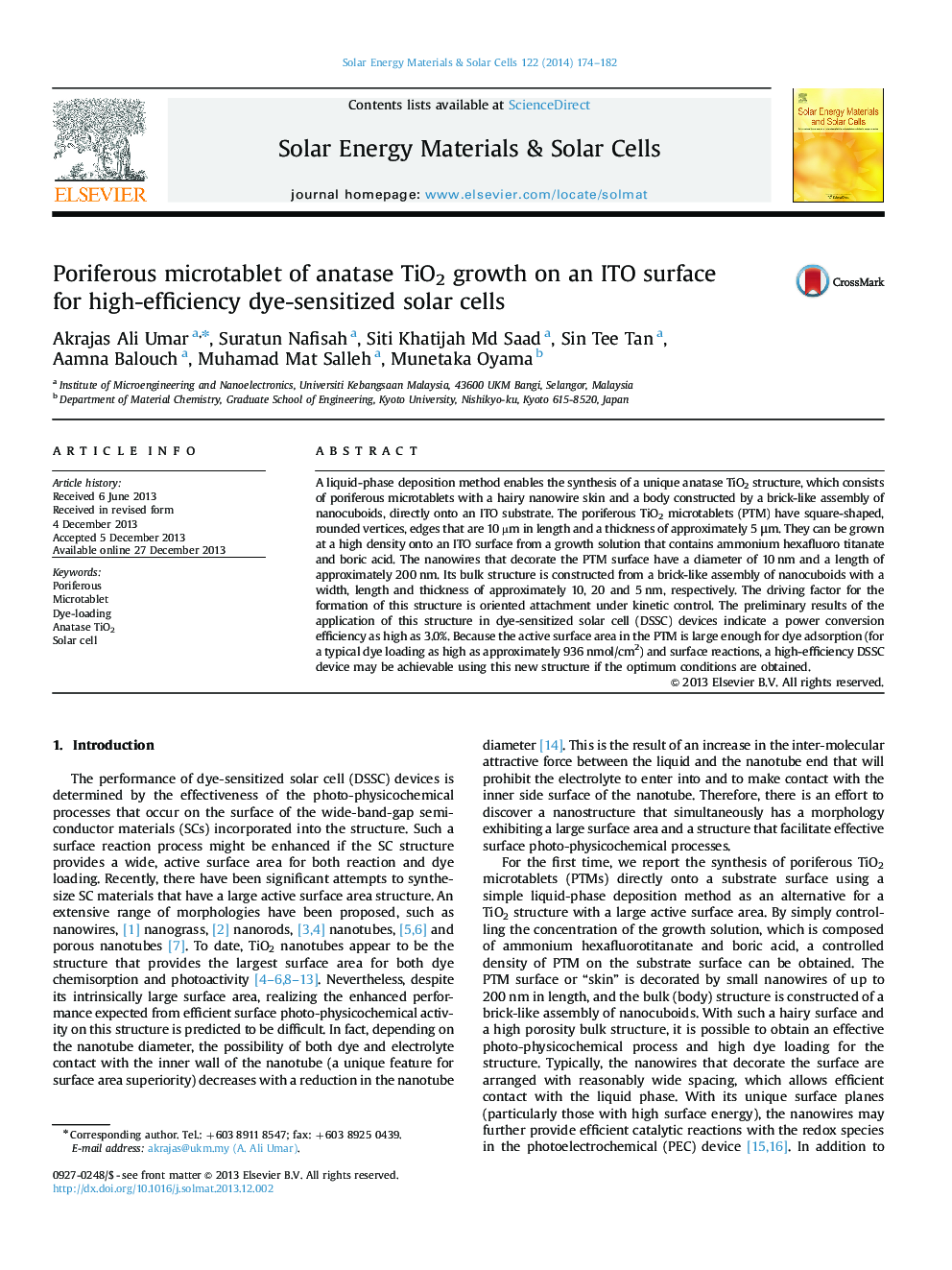| Article ID | Journal | Published Year | Pages | File Type |
|---|---|---|---|---|
| 6535834 | Solar Energy Materials and Solar Cells | 2014 | 9 Pages |
Abstract
A liquid-phase deposition method enables the synthesis of a unique anatase TiO2 structure, which consists of poriferous microtablets with a hairy nanowire skin and a body constructed by a brick-like assembly of nanocuboids, directly onto an ITO substrate. The poriferous TiO2 microtablets (PTM) have square-shaped, rounded vertices, edges that are 10 µm in length and a thickness of approximately 5 μm. They can be grown at a high density onto an ITO surface from a growth solution that contains ammonium hexafluoro titanate and boric acid. The nanowires that decorate the PTM surface have a diameter of 10 nm and a length of approximately 200 nm. Its bulk structure is constructed from a brick-like assembly of nanocuboids with a width, length and thickness of approximately 10, 20 and 5 nm, respectively. The driving factor for the formation of this structure is oriented attachment under kinetic control. The preliminary results of the application of this structure in dye-sensitized solar cell (DSSC) devices indicate a power conversion efficiency as high as 3.0%. Because the active surface area in the PTM is large enough for dye adsorption (for a typical dye loading as high as approximately 936 nmol/cm2) and surface reactions, a high-efficiency DSSC device may be achievable using this new structure if the optimum conditions are obtained.
Keywords
Related Topics
Physical Sciences and Engineering
Chemical Engineering
Catalysis
Authors
Akrajas Ali Umar, Suratun Nafisah, Siti Khatijah Md Saad, Sin Tee Tan, Aamna Balouch, Muhamad Mat Salleh, Munetaka Oyama,
